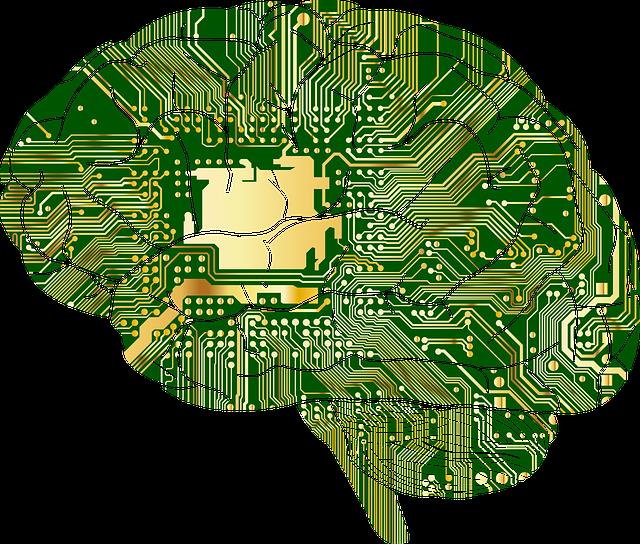
Machine learning and artificial intelligence (AI) have revolutionized numerous industries, offering unprecedented capabilities and opportunities.
In this article, we will delve into the 10 game-changing aspects of machine learning and AI, exploring concepts such as:
- Supervised and unsupervised learning
- Reinforcement learning
- Deep learning
- Artificial neural networks
- Predictive modeling
- Feature extraction
- Decision tree learning
- Algorithm development
By understanding these fundamental aspects, you will gain valuable insights into how machine learning and AI are reshaping the future of technology and innovation.
Supervised Learning
Supervised learning is a powerful technique in machine learning and AI where a model is trained on labeled data to make accurate predictions or classifications. It is an essential aspect of decision making, as it enables the model to learn patterns and relationships in the data, allowing it to generalize and make informed decisions based on new, unseen instances.
The main goal of supervised learning is to maximize classification accuracy, ensuring that the model can accurately assign labels or predict outcomes based on input data. This process involves training the model on a known dataset, where the correct labels are provided, and then evaluating its performance on unseen data.
Unsupervised Learning
Unsupervised learning is a fundamental technique in machine learning and AI that allows models to analyze unlabeled data and discover patterns or structures without explicit guidance or supervision.
This type of learning is particularly valuable when working with large datasets where labeling every data point is impractical or costly.

Unsupervised learning encompasses various methods, including anomaly detection and clustering. Anomaly detection focuses on identifying data points that deviate from the expected pattern, which is useful for detecting fraud or unusual behavior.
Clustering, on the other hand, groups similar data points together based on their inherent characteristics, enabling the discovery of hidden patterns or natural groupings within the data.
Reinforcement Learning
Reinforcement learning revolutionizes the field of machine learning and AI by enabling models to learn from their own experiences and interactions with the environment. This approach provides a powerful way to train models in dynamic and uncertain environments, where traditional supervised learning falls short.
Reinforcement learning applications and algorithms offer several benefits:
- Trial and error learning: Reinforcement learning enables agents to learn through trial and error, making them capable of exploring different strategies and adapting their behavior based on feedback.
- Long-term planning: Reinforcement learning algorithms can optimize decisions over time, considering the long-term consequences of actions.
- Complex decision-making: Reinforcement learning allows models to make complex decisions by breaking them down into smaller actions and learning the optimal sequence of actions.
- Real-world applications: Reinforcement learning has been successfully applied in various domains, including robotics, game playing, and autonomous vehicles.
Deep Learning
Deep Learning, a subset of machine learning, is characterized by its neural network architecture, which allows for complex data processing and pattern recognition.
One of the key game-changing aspects of Deep Learning is its image recognition capabilities, enabling machines to accurately identify and classify images.
Additionally, Deep Learning has revolutionized the field of Natural Language Processing, allowing machines to understand and generate human language with remarkable accuracy and fluency.

Neural Network Architecture
Neural network architecture plays a pivotal role in revolutionizing machine learning and AI. It is a key component that determines the performance and capabilities of deep learning models.
To truly understand the significance of neural network architecture, consider the following:
- Neural network optimization: The architecture of a neural network directly affects the optimization process, which involves finding the optimal set of weights and biases to minimize the loss function. Different architectures may require different optimization techniques, such as gradient descent or stochastic gradient descent.
- Transfer learning: Neural network architecture enables transfer learning, which allows the knowledge gained from one task to be applied to another related task. By leveraging pre-trained models with well-designed architectures, transfer learning can significantly improve the efficiency and effectiveness of training new models.
- Model interpretability: The architecture of a neural network can influence the interpretability of its predictions. Some architectures, such as convolutional neural networks, are known for their ability to capture hierarchical features, making it easier to understand and interpret the model's decision-making process.
- Scalability and efficiency: The architecture of a neural network can impact its scalability and efficiency, particularly in large-scale applications. Well-designed architectures can optimize computational resources and memory usage, allowing for faster and more efficient training and inference.
Image Recognition Capabilities
The advancements in machine learning and AI have revolutionized the field of image recognition, allowing for remarkable progress in accurately identifying and categorizing visual content.
Image recognition capabilities, powered by deep learning techniques, have significantly improved image classification and object detection tasks. Deep learning algorithms, such as convolutional neural networks (CNNs), have proven to be highly effective in recognizing patterns and features within images, enabling accurate identification of objects and their attributes.
Image classification involves categorizing images into predefined classes or categories, while object detection aims to locate and identify specific objects within an image.
These capabilities have numerous applications across various industries, including healthcare, autonomous vehicles, surveillance, and retail.
The continuous advancements in image recognition capabilities ensure that machines can now perceive and understand visual content with a level of accuracy that was once thought impossible.
Natural Language Processing
Natural language processing, a groundbreaking aspect of machine learning and AI, plays a crucial role in enabling computers to understand, interpret, and generate human language. This subfield encompasses various techniques and methodologies that facilitate tasks such as text summarization and chatbot development.
Some key areas of focus include:
- Text Summarization: NLP algorithms can automatically generate concise summaries of large volumes of text, enabling users to quickly extract relevant information without having to read through entire documents.
- Chatbot Development: NLP techniques are employed to build intelligent chatbots that can understand and respond to user queries in a conversational manner. These chatbots leverage deep learning models to improve accuracy and provide more human-like interactions.
- Semantic Analysis: NLP models analyze the meaning and context of words and phrases, allowing for more accurate sentiment analysis, entity recognition, and language translation.
- Language Generation: Deep learning approaches enable computers to generate human-like language, opening up possibilities for automated content creation, dialogue generation, and storytelling.
Through advancements in natural language processing, machines are becoming more proficient at understanding and generating human language, revolutionizing various industries and enhancing the way we communicate with technology.
Artificial Neural Networks
Exploring the capabilities of Artificial Neural Networks is essential for understanding the game-changing aspects of machine learning and AI.
Neural networks are a key component of machine learning algorithms, designed to mimic the human brain's ability to learn and recognize patterns.
Neural network training involves adjusting the weights and biases of interconnected nodes, called neurons, to minimize the error between the predicted and actual outputs.
This iterative process allows the network to improve its performance over time.

One of the primary applications of neural networks is pattern recognition, where they excel in identifying complex patterns and making accurate predictions based on them.
With advancements in deep learning and the availability of vast amounts of data, artificial neural networks have become increasingly powerful tools in various fields, revolutionizing industries such as healthcare, finance, and technology.
Natural Language Processing
Natural Language Processing (NLP) has witnessed significant advancements in speech recognition, enabling machines to understand and transcribe human speech accurately. This has revolutionized various industries such as customer service and healthcare, where voice assistants and transcription services have become indispensable.
Additionally, NLP has found applications in sentiment analysis, helping businesses gauge public opinion and sentiment towards their products or services.
Speech Recognition Advancements
With advancements in machine learning and AI, speech recognition has made significant progress in accurately understanding and interpreting spoken language. This has led to several game-changing developments in the field of natural language processing. Here are some key advancements in speech recognition:
- Speaker recognition: Machine learning algorithms can now identify individual speakers based on their unique vocal characteristics, enabling personalized user experiences and enhanced security measures.
- Emotion detection: AI models can analyze the tone, pitch, and other vocal cues to detect and interpret emotions in speech. This opens up possibilities for sentiment analysis, customer feedback analysis, and personalized virtual assistants that can respond empathetically.
- Real-time transcription: Advanced speech recognition systems can transcribe spoken language in real-time, making it easier to capture and analyze conversations, interviews, and meetings.
- Multilingual support: Machine learning algorithms can now recognize and interpret multiple languages, facilitating communication and understanding across different cultures and regions.
These advancements in speech recognition have revolutionized the way we interact with machines and paved the way for more efficient and effective human-machine communication.
Sentiment Analysis Applications
How can sentiment analysis applications in natural language processing leverage the advancements in speech recognition to enhance understanding and interpretation of emotions in spoken language?

Sentiment analysis is a powerful tool that allows organizations to gain valuable insights from customer feedback, social media posts, and other textual data. By combining speech recognition technology with sentiment analysis, organizations can now analyze emotions expressed in spoken language, opening up new possibilities for understanding customer sentiment.
However, there are challenges to overcome, such as accurately transcribing spoken language and accounting for the nuances of tone and inflection.
Despite these challenges, sentiment analysis benefits organizations by providing them with a deeper understanding of customer emotions and preferences, enabling them to make more informed decisions and improve customer satisfaction.
As advancements continue to be made in speech recognition and natural language processing, sentiment analysis applications will undoubtedly become even more valuable in the future.
Language Translation Capabilities
Language translation capabilities in natural language processing enable seamless communication and understanding across different languages. This game-changing aspect of machine learning and AI has the potential to revolutionize global communication. Here are some key features of language translation capabilities:
- Improving accuracy: Machine learning algorithms are constantly being refined and trained to improve the accuracy of translation. This enables more precise and reliable translations, reducing the chances of miscommunication.
- Real-time translation: Advanced machine learning models and deep neural networks allow for real-time translation, making it possible to have live conversations and interactions in different languages.
- Multilingual support: Language translation capabilities can support a wide range of languages, allowing individuals to communicate and understand each other regardless of their native tongue.
- Contextual understanding: Machine learning algorithms can now understand the context of a sentence or phrase, enabling more accurate translations that capture the intended meaning.
These advancements in language translation capabilities are empowering individuals and businesses to break down language barriers and foster global collaboration.
Predictive Modeling
One key aspect of machine learning and AI that has the potential to revolutionize various industries is the application of predictive modeling.

Predictive modeling is a technique that uses historical data to forecast future outcomes. By analyzing patterns and relationships within the data, predictive analytics can provide valuable insights and make accurate predictions.
This process involves data mining, which involves extracting relevant information from large and complex datasets.
Predictive modeling has a wide range of applications, from finance and marketing to healthcare and manufacturing.
It allows businesses to make informed decisions, optimize their operations, and gain a competitive edge in the market.
With the advancements in machine learning and AI, predictive modeling is becoming increasingly sophisticated, enabling organizations to harness the power of data and make more accurate predictions than ever before.
Feature extraction plays a crucial role in machine learning and AI. It involves selecting the most relevant features from a dataset. By carefully choosing the features, we can significantly impact the performance of our models. This is done by reducing noise and increasing their predictive power.
The process of feature selection requires a deep understanding of the problem domain and the underlying data. It is important to ensure that the chosen features capture the most meaningful information for accurate predictions.
Importance of Feature Selection
Effective selection of relevant variables is crucial in machine learning and AI for optimal performance and accurate data analysis. Feature selection techniques play a vital role in identifying the most informative features from a dataset, eliminating redundant or irrelevant ones, and reducing dimensionality.
This process not only enhances the computational efficiency but also helps in mitigating the curse of dimensionality. By selecting the right set of features, machine learning models can achieve better generalization and interpretability, leading to improved predictions and insights.
Some popular feature selection techniques include filter methods, wrapper methods, embedded methods, and dimensionality reduction techniques such as Principal Component Analysis (PCA) and Linear Discriminant Analysis (LDA). Incorporating these techniques can significantly enhance the performance and efficiency of machine learning and AI algorithms.
The impact of feature extraction on model performance in machine learning and AI is significant. Feature extraction involves selecting and transforming relevant features from raw data to enhance the performance of machine learning models.
It plays a crucial role in improving model accuracy, reducing computational complexity, and increasing interpretability. Algorithm optimization techniques, such as dimensionality reduction algorithms like Principal Component Analysis (PCA) and Linear Discriminant Analysis (LDA), are commonly applied for effective feature extraction. These techniques help in reducing the dimensionality of the input data while preserving its essential information.
Additionally, data preprocessing techniques, such as scaling, normalization, and handling missing values, also contribute to improving model performance by ensuring data quality.
The combination of algorithm optimization and data preprocessing techniques in feature extraction leads to enhanced model performance, making it a critical aspect of machine learning and AI.

Decision Tree Learning
How can decision tree learning revolutionize the field of machine learning and AI?
Decision tree learning is a powerful algorithm optimization technique that has the potential to transform the way we approach machine learning and AI. It offers several game-changing aspects that can significantly enhance the performance and efficiency of these systems.
Here are four key ways in which decision tree learning can bring about a revolution in the field:
- Highly interpretable models: Decision trees provide a transparent representation of the decision-making process, allowing users to understand and interpret the models easily.
- Efficient handling of large datasets: Decision tree algorithms can handle large datasets efficiently, making them suitable for big data applications.
- Automatic feature selection: Decision tree learning can automatically identify the most informative features, eliminating the need for manual feature selection.
- Tree pruning: Decision trees can be pruned to optimize their performance, reducing overfitting and improving generalization.
Algorithm Development
Continuing the exploration of machine learning and AI, the next subtopic to be examined is algorithm development, which plays a crucial role in advancing these fields.
Algorithm development involves creating and refining the mathematical models and computational techniques used in machine learning and AI.
One key aspect of algorithm development is algorithm optimization, which focuses on improving the efficiency and effectiveness of algorithms. This is achieved through techniques such as fine-tuning parameters, reducing computational complexity, and implementing parallel processing.
Another important aspect is model evaluation, which involves assessing the performance and accuracy of the algorithms. This is done through various metrics and techniques, such as cross-validation, precision, recall, and F1-score.

Algorithm development is an ongoing process that requires continuous refinement and improvement to ensure the optimal performance of machine learning and AI systems.
Frequently Asked Questions
How Can Supervised Learning Algorithms Be Applied in Real-World Scenarios to Solve Complex Problems?
Supervised learning algorithms are widely used in real-world scenarios to solve complex problems. They provide a structured approach to problem-solving by utilizing labeled data to train models, enabling accurate predictions and decision-making in various industries and applications.
What Are Some Common Challenges Faced in Unsupervised Learning and How Can They Be Overcome?
Common challenges in unsupervised learning include clustering, dimensionality reduction, and outlier detection. These can be overcome by using techniques such as k-means clustering, principal component analysis, and anomaly detection algorithms, thereby improving the performance of unsupervised learning models.
How Can Reinforcement Learning Algorithms Be Used to Optimize Decision-Making Processes in Industries Like Finance or Healthcare?
Reinforcement learning algorithms have significant potential to optimize decision-making processes in industries like finance or healthcare. Applications range from using reinforcement learning in robotics to improve efficiency and safety, to optimizing supply chain decisions using reinforcement learning techniques.
What Are the Key Differences Between Shallow and Deep Learning Models, and When Should Each Be Used?
Shallow learning models are simpler, faster, and require less data, making them suitable for small-scale problems. Deep learning models, on the other hand, are more complex, accurate, and excel in large-scale, complex tasks.
How Can Artificial Neural Networks Be Trained to Handle Large-Scale Datasets Efficiently?
Artificial neural networks can be trained to handle large-scale datasets efficiently through the use of optimization techniques. These techniques focus on improving training efficiency by minimizing computational resources and optimizing the learning process.
 Business & FinanceHealth & MedicineTechnologyLifestyle & CultureScience & EnvironmentWorld NewsPrivacy PolicyTerms And Conditions
Business & FinanceHealth & MedicineTechnologyLifestyle & CultureScience & EnvironmentWorld NewsPrivacy PolicyTerms And Conditions
